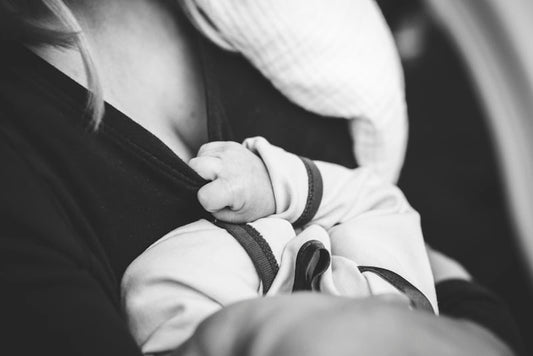Traveling with breast milk can be a daunting task for new mothers, but it doesn't have to be. With a little bit of preparation and knowledge, traveling with breast milk can be stress-free. Breast milk is considered a medically necessary liquid, which means that it is exempt from the TSA's 3-1-1 rule. However, there are still rules and regulations that must be followed to ensure that the breast milk is transported safely.
One of the most important things to consider when traveling with breast milk is storage. Breast milk can be stored in a cooler with ice packs for up to 24 hours, but it is recommended to use dry ice if the milk will be stored for longer periods. When using dry ice, it is important to follow the TSA's guidelines for the amount of dry ice that can be used. It is also important to label the breast milk with the mother's name and contact information to prevent any confusion or mix-ups.
Another consideration when traveling with breast milk is security. Breast milk is exempt from the TSA's liquid restrictions, but it is still subject to screening. Mothers should inform TSA agents that they are traveling with breast milk, and they may be asked to open the containers for inspection. It is also important to note that breast milk may be subject to additional screening, such as swabbing for explosives. By following these guidelines, mothers can ensure that their breast milk is transported safely and with minimal stress.
Understanding Breast Milk Travel Regulations
Traveling with breast milk can be a daunting experience for many new mothers. However, with proper planning and understanding of the regulations, it can be a smooth and hassle-free process.
TSA Guidelines for Breast Milk
The Transportation Security Administration (TSA) has specific guidelines for traveling with breast milk. According to the TSA guidelines, breast milk is exempt from the 3-1-1 rule, which means that it can be carried in quantities greater than 3.4 ounces or 100 milliliters in carry-on baggage. However, the breast milk must be declared to the TSA officer at the security checkpoint and will be subject to additional screening.
It is recommended to carry breast milk in a separate cooler bag or container to make the screening process easier. The breast milk should also be stored in leak-proof containers and labeled with the mother's name, baby's name, and date of expression.
International Travel Considerations
When traveling internationally, it is important to check the breast milk travel regulations of the destination country. Some countries may have different rules and regulations regarding the transportation of breast milk.
The Centers for Disease Control and Prevention (CDC) recommends that travelers contact the embassy or consulate of the destination country to obtain information on their specific breast milk travel regulations. It is also important to check the airline's breast milk travel regulations as they may have additional requirements.
Overall, understanding the TSA regulations and international travel considerations can help make traveling with breast milk a stress-free experience. By following these guidelines and properly planning, mothers can ensure that their breast milk is transported safely and efficiently.
Packing and Storing Breast Milk for Travel
Traveling with breast milk can be challenging, but with proper planning and preparation, it can be done safely and efficiently. Here are some tips on packing and storing breast milk for travel.
Choosing the Right Containers and Coolers
When it comes to packing and storing breast milk for travel, choosing the right containers and coolers is crucial. Breast milk storage bags or bottles are ideal for packing breast milk because they are leak-proof and can be easily labeled with the date and time the milk was pumped.
An insulated cooler bag is also essential for keeping the breast milk cool during travel. It is important to choose a cooler bag that is specifically designed for breast milk storage and transportation, as it will have the necessary insulation to keep the milk at the appropriate temperature.
Ice packs or gel packs are also necessary for keeping the breast milk cool. Make sure to pack enough ice packs or gel packs to keep the breast milk at the appropriate temperature for the duration of the trip. Freezer packs are also an option, but they may not stay cold as long as ice packs or gel packs.
Breast Milk Storage Guidelines
It is important to follow proper breast milk storage guidelines when packing and storing breast milk for travel. According to the CDC, breast milk can be stored at room temperature for up to 4 hours, in a cooler with ice packs for up to 24 hours, and in a freezer for up to 6 months.
When traveling with breast milk, it is important to keep the milk at the appropriate temperature to prevent spoilage and bacteria growth. Breast milk should be stored in a cooler with ice packs or gel packs at a temperature of 40°F or below. Frozen breast milk should be stored in a cooler with freezer packs at a temperature of 0°F or below.
When traveling with breast milk in quantities greater than 3.4 ounces, it is important to notify the TSA officer at the beginning of the screening process and separate the breast milk and accompanying items from other carry-on items to be screened separately.
By following these guidelines and choosing the right containers and coolers, traveling with breast milk can be done safely and efficiently.
Navigating Airport Security with Breast Milk
Traveling with breast milk can be challenging, especially when it comes to navigating airport security. However, with a little preparation and knowledge of the screening process, it is possible to make the process as smooth as possible.
Screening Process for Carry-Ons
According to the Transportation Security Administration (TSA), breast milk, formula, and baby food are allowed in carry-on baggage in quantities greater than 3.4 ounces or 100 milliliters. However, they must be declared at the beginning of the screening process and will be subjected to additional screening.
When going through the security checkpoint, travelers with breast milk should separate it from their other carry-on items and inform the TSA officer. The officer may ask to inspect the milk and accompanying items, such as ice packs or bottles, which should be placed in a separate bin for screening.
Dealing with X-Ray Machines and TSA Officers
Breast milk and other liquids may be subject to additional screening using X-ray machines or bottle liquid scanners. While these machines are safe for breast milk, some mothers may prefer to avoid the X-ray machine and request a manual inspection instead.
If a manual inspection is requested, the TSA officer will perform a visual inspection of the milk and accompanying items. The officer may also ask to swab the items for explosive residue.
It is important to note that TSA officers are trained to handle breast milk and other liquids with care and respect. If a traveler encounters any issues or has concerns, they should speak with a supervisor or file a complaint with the TSA.
In conclusion, navigating airport security with breast milk requires a little extra preparation and knowledge of the screening process. By declaring the milk at the beginning of the process, separating it from other carry-on items, and following the TSA's guidelines, travelers can ensure a smooth and stress-free experience.
Breastfeeding and Pumping While Traveling
Traveling with breast milk can be challenging, but with proper planning, it is possible to continue breastfeeding and pumping on the go. Here are some tips for traveling with breast milk:
Finding Privacy and Lactation Spaces
Finding a private place to pump can be challenging, especially when traveling. Many airports and public places now have lactation rooms or pods, which provide a quiet and comfortable space for nursing mothers to pump. Mamava is a popular company that provides lactation pods in many airports and public spaces.
If a lactation room is not available, nursing mothers can use a nursing cover or a hands-free pumping bra to pump discreetly. It is important to note that pumping in public is legal in the United States, but it is always a good idea to check local laws and customs when traveling internationally.
Managing Pumping Schedules on the Go
Traveling can disrupt a nursing mother's pumping schedule, but with a portable pump, it is possible to pump on the go. A portable pump is a small and lightweight pump that is easy to carry in a backpack or purse. Many portable pumps now come with rechargeable batteries, making it easy to pump on a plane or in a car.
It is also important to bring extra pump parts and a cleaning kit when traveling. Pump parts can break or get lost, and having extra parts on hand can prevent a pumping emergency. A cleaning kit is essential for keeping pump parts clean and sterile while on the go.
If a nursing mother is struggling with breastfeeding or pumping while traveling, a lactation consultant can provide guidance and support. Many hospitals and clinics now offer virtual lactation consultations, which can be a helpful resource for nursing mothers on the go.
Overall, traveling with breast milk requires some extra planning and preparation, but with the right tools and resources, it is possible to continue breastfeeding and pumping while on the go.
Alternative Options for Traveling with Breast Milk
Traveling with breast milk can be a challenge, but there are alternative options available for mothers who wish to transport their milk safely and easily. Here are two popular options:
Shipping Breast Milk
Shipping breast milk is a great option for mothers who need to transport a large amount of milk. This method is especially useful for long trips or when traveling internationally. Mothers can ship their milk to their destination ahead of time, ensuring that it arrives safely and on time.
When shipping breast milk, it is important to use a reputable shipping company that specializes in transporting breast milk. These companies will provide the necessary packaging and instructions for shipping breast milk safely. It is also important to use dry ice to keep the milk frozen during transit.
Using Milk Stork and Other Services
Milk Stork is a service that allows mothers to ship their breast milk home while they continue to travel. The service provides a cooler and shipping materials that can be dropped off at a FedEx location. The milk is then shipped to the mother's home, where it arrives within one to two days.
Other services such as Milk Mob and Milk on the Move also offer similar options for mothers who need to transport their breast milk while traveling. These services provide coolers and shipping materials, making it easy for mothers to transport their milk safely and easily.
In conclusion, mothers have alternative options for traveling with breast milk that can make the process less stressful and more convenient. Whether shipping their milk ahead of time or using a service like Milk Stork, mothers can ensure that their breast milk arrives safely at their destination.






